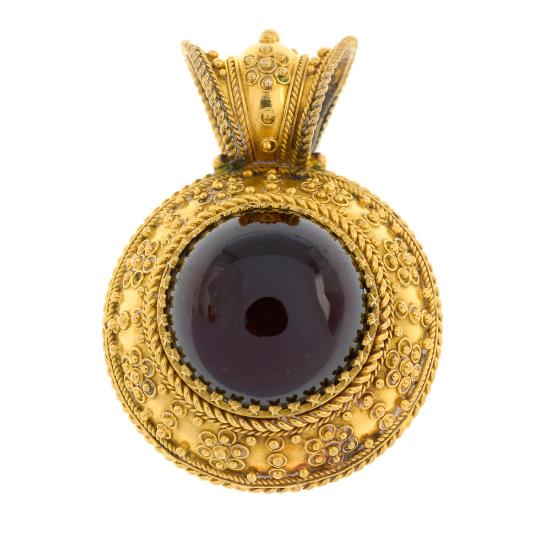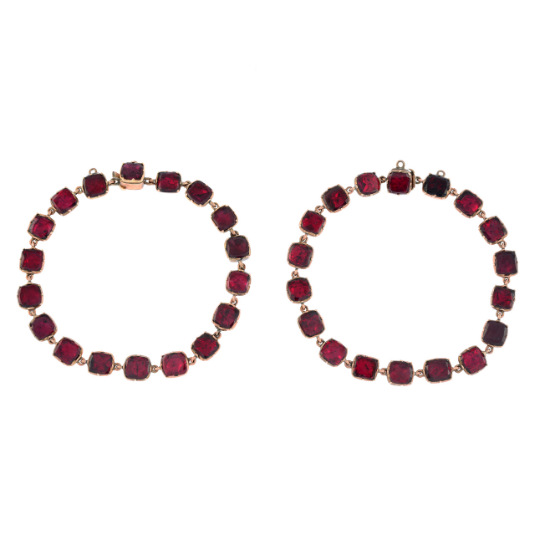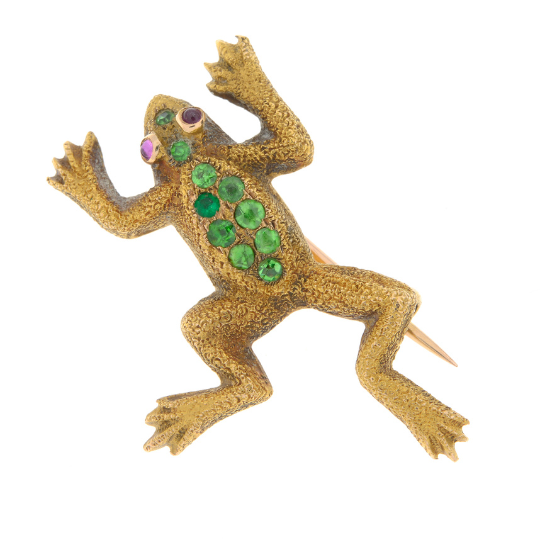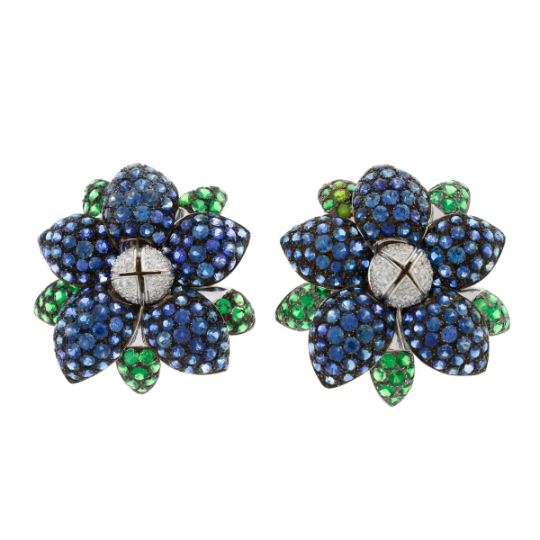The first colour that everyone thinks of when you say garnet is the intense red-to-purplish colour, typical of almandine and pyrope garnets. But did you know they also occur in green, yellow, orange, pink, purple, black and even colour-change varieties?
The present-day name ‘garnet’ originates from the Latin word ‘granatum’ meaning ‘pomegranate’. This is due to the similarity of garnet crystals to pomegranate seeds.
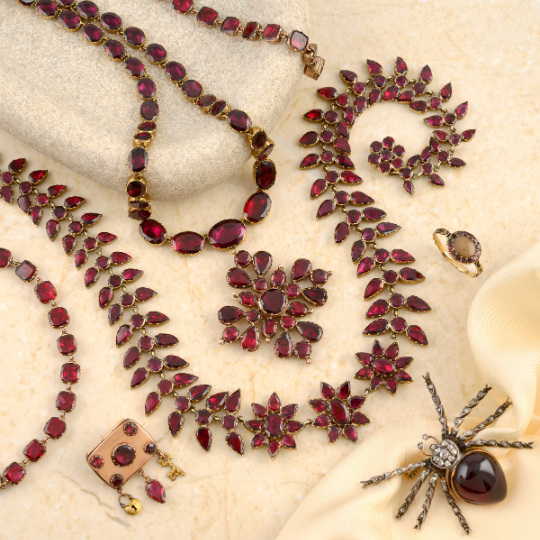
The History of Garnet Jewellery
Throughout the centuries, people have associated garnets with mystical powers. In the Roman period, these stones symbolised wealth and status. Fine examples were carved into cameos or intaglios of classical figures or deities.
In the Renaissance period, carbuncles were made by hollowing out large irregular cabochons; these were often set in closed-back settings to make the stone come to life. Several pieces of jewellery set with garnet carbuncles were found in the Cheapside hoard.
The real heyday for garnets was in the 18th and 19th centuries. Flat-cut almandine garnets were set into parures, a set comprising a necklace, a pair of bracelets and a pair of earrings. The stones were often foil-backed and put in closed-back settings, giving the appearance that the stones were glowing, especially if lit by candlelight.
Later, hand craftsmanship gave way to mechanical mass production, and in parts of Europe, silver gilt garnet jewellery was made on a large scale, often set with less expensive gemstones such as turquoise or pearls. At the same time, in Czechoslovakia (now Czech Republic and Slovakia), they began to set clusters of simply faceted pyrope garnets in base metal settings. This provided colourful but affordable jewellery, for the mass market. They are known as ‘Bohemian’ garnets and are still common today.
Unusual Garnets
Vivid yellowish-green demantoid garnets were first discovered in the Ural Mountains in Russia, where the higher-quality gemstones still come from. They are one of the most valuable gemstones on the market especially if they have the characteristic fibrous fan pattern horsetail inclusions.
The green demantoid garnet was first set commercially in jewellery by the world-famous jeweller Peter Carl Fabergé. The variation of green tones and adamantine lustre of the garnet closely mimicked the look of reptile skin or an insect’s body. This resulted in the creation of many novelty brooches designed as frogs, lizards, and dragonflies adorned with this dazzling gem.
An unusual feature garnets can show is an asterism, an optical phenomenon caused by tiny fibres in the gemstone that form dense inclusions. When light reflects from the stone, it creates a starburst figure. The stone must be cut as a domed cabochon to display this effect. In garnets, you get either four or six-ray stars.
The garnet is an underrated gemstone, and the array of colours and properties they can have is quite astonishing. In recent years, the popularity of coloured garnets like spessartine, tsavorite and colour change garnets has increased as people are starting to realise they are a good alternative to the more expensive coloured gemstones like sapphires, rubies and emeralds.
Garnets at Auction
Victorian gold garnet pendant 'From V.R.'
Estimate: £600 - £800
Pair of Georgian foil back garnet bracelets
Price Realised: £858.00
Victorian 15ct gold demantoid garnet frog brooch
Price Realised: £884.00
Diamond, sapphire and tsavorite garnet earrings
Estimate: £1,200 - £1,800

